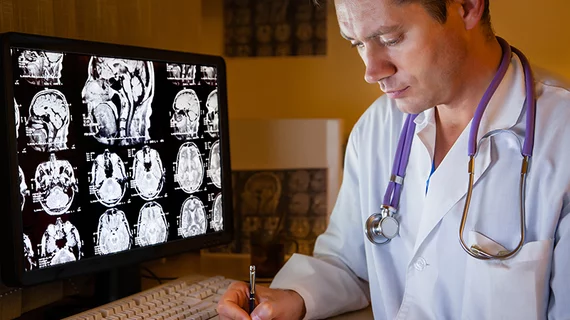Despite concerns, PACS-embedded AI does not inflate radiologists’ interpretation times
Artificial intelligence embedded into picture archiving and communication systems does not significantly increase radiologists’ interpretation times, according to the results of a new real-world study.
Some experts fear AI may force rads to perform additional tasks, a legitimate concern outlined in prior research. At the same time, imaging software is proven to help detect multiple types of cancer.
Despite conflicting evidence, one thing is clear: many algorithms have been tested retrospectively or in research settings, rather than real-world environments, Danish researchers explained Wednesday in Academic Radiology.
Wanting to change that, the group assessed radiologists’ performance with an AI-based tool for reviewing non-contrast chest CT scans. Average reading times for thoracic experts and residents weren’t greatly affected and AI actually helped less-experienced rads, the findings showed.
“Overall, results from this feasibility study put forward the theory that PACS-based integration of AI tools for the assisted reading of chest CT images is feasible without high reading time impact, while providing diagnostic benefits to the radiologist,” Felix C. Müller, with Herlev and Gentofte Hospital’s Department of Radiology, and co-authors explained.
For their study, Müller et al. implemented an AI tool into the PACS reading workflow between April-May 2020. The software performs nine tasks and generates an overview image with organ-specific, color-coded findings. Reading times were recorded for one resident and one thoracic expert with AI assistance (20 exams) and without it (25 exams).
The thoracic consultant’s average read time only increased by 13 seconds when using AI, which wasn’t statically significant, the authors noted. The resident’s read times were similarly unaffected, increasing by 67 seconds, on average.
AI assistance did uncover actionable findings in 12.5% of exams and resulted in a better case overview for residents in 90% of CT scans.
The findings are strengthened by the study’s real-world setting, the authors noted. Still, future investigations should include additional radiologists and exams.
“The PACS-based integration of the AI tool did not significantly increase reading time for the radiology resident or the thoracic radiology consultant with additional actionable findings made as well as a perceived better overview for the radiology resident,” the researchers added. “We recommend outcomes to be verified in a full-scale study.”
View the entire study here (paywall).

